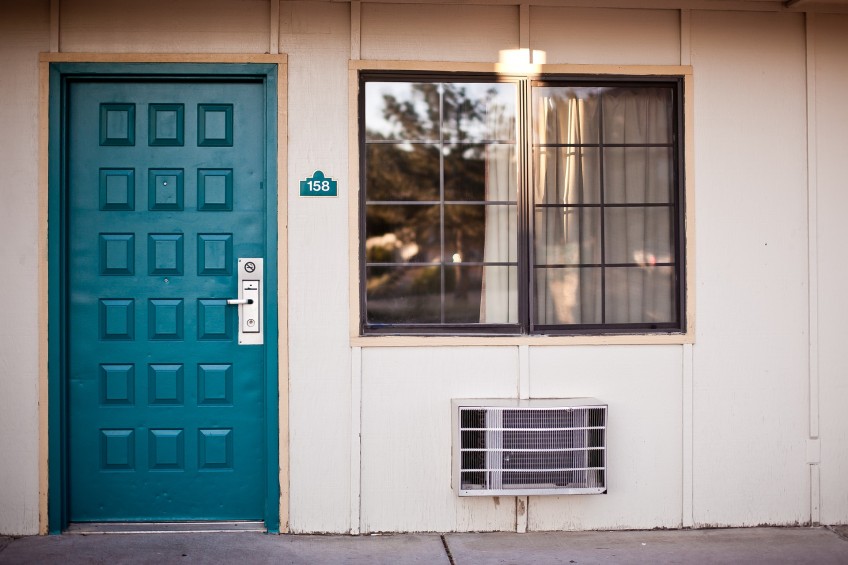Introduction
It is critical to make sure that your heating system is operating correctly in advance of the upcoming cold weather. Annual service of your boiler and/or furnace is important not only for reliability and energy efficiency, but for safety as well. Here’s how to complete some basic items yourself and select a pro for the more advanced items.
Step by step
A heating system is a complicated series of equipment, ductwork, and piping that handles dangerous fuels (natural gas, propane, or fuel oil) and has high temperature/pressure water, steam, or air. As such, a full inspection should be deferred to a licensed HVAC company. In the second half of this tutorial we'll talk about how to select a contractor for this service. However, there are some basic items you can complete yourself. Let’s review these first.
How to Complete DIY Items
Whether you have a steam boiler, electric baseboard, or anything in between, here’s some items you can complete yourself to ensure your system will operate safely and efficiently during the upcoming heating season.
- Vacuum Grills & Registers
Using the brush and corner attachments for your vacuum, clean inside the grills and registers if you have a forced air system. Make sure to get both the return air grill as well as the supply.
If you have floor registers, it is worth taking an extra step to remove the grill and vacuum down inside the ductwork as far as you can reach. Over time, dirt and dust gathers here and a good cleaning will help keep it from blowing in to the air you’re breathing. - Vacuum Baseboard Heat & Radiators
If you have hydronic (hot water), steam, or electric baseboard heat you’ll have some sort of radiators along the wall. These may be baseboard heating that are less than 12” tall or old style cast iron radiators that stand 3-4’ tall. In either case, it is good to give them a good vacuuming and cleaning once a year. Since these haven’t been used since last winter they have gathered dust that will reduce thermal transfer (efficiency) and may even cause a slight burning smell when the system is first turned on.
Start by vacuuming anywhere you can reach with the corner attachment. Some baseboards may have protective covers that you can easily remove in order to access the actual heating coils. These are especially important to clean. For larger surfaces, the brush attachment may work well. Use a damp rag to wipe down surfaces if grime still remains after vacuuming. - Change Air Filters
If you have a forced air system, this is something you should be doing quarterly anyhow. We have a tutorial specifically on “How to Change Your Air Filters” that will give you all you need on this task.
Even if you don’t have a forced air system, you may still have a filter on the combustion air portion of your furnace or boiler. Changing this will typically be covered under the pro service we’ll talk about in the second half of this tutorial. - Program Thermostat
Having your thermostat properly programmed for temperature and schedule is the single most important thing you can do to lower your heating cost. We’ve again written a full tutorial on this item alone, so read more on “How to Program Your Thermostat” and be sure to get this ready before the cold weather starts! - Change Carbon Monoxide & Smoke Detector Batteries
You should proactively change the batteries in your smoke alarm and CO (carbon monoxide) detectors every 6 months. We have a separate tutorial just on “How to change the batteries in your Smoke & CO Alarms”, but we can never remind you enough!
If you don’t have smoke or CO sensors installed, now is a great time to read our tutorial on “How to Install Smoke and CO Sensors” and get that fixed right away. - Clean Around Equipment
Many fires have been started because of clutter and debris too close to combustion appliances. Make sure there isn’t anything stored within a few feet of your boiler or furnace. Take extra care to remove boxes, paper, or fabric. Sweep the area clean so no dust or cobwebs are close by either.
Go outside and locate the vent pipes or intake air sources for your appliances. These may be as simple as a PVC pipe coming from the ground or an inlet vent to the basement. These must remain clear or debris (grass clippings, bird nests, etc.) as well as ice and snow. Check inside to make sure everything is clear and trim back any shrubs or grass that is close by. You’ll want to be able to access these during the winter to check them and clear snow and ice, so make sure everything is accessible now.
How to find a HVAC Professional (for the more advanced service)
A full heating system service and safety check is beyond the scope of most homeowners and requires expensive specialty tools such as a combustion analyzer and the training to know how to use them. As such, this part of the tutorial is focused on selecting a good HVAC contractor and what to expect when they arrive to complete the annual service.
You should expect to pay anywhere from $100-200 for an annual service call. Beware contractors who offer free or deeply discounted service as they may be the most likely to sell you unnecessary “repairs”. An honest and economical contractor is worth their weight in gold, so here’s some steps to find one.
- Identify 3-5 contractors
Google search ‘HVAC contractors near me’ or “HVAC contractors + my town” to find service providers in your area. Ask around with your friends and neighbors to see who they recommend as well. Build a list of 3-5 contractors and don’t be afraid to choose a mix of small contractors as well as larger, well-known contractors. Sometimes a small shop will give you the best prices as they keep overhead low by not advertising much or having a lot of admin overhead. As long as you vet them through the following steps, they can be just as good (or better!) as the big guys. - Ask Questions
Talk to at least 3 contractors before making a decision. Ask each of them some of the following questions:
- “Are your technicians all professionally licensed in our state?”
- “Is your company fully insured to state requirements?”
- “What is included in your Fall Heating Service?”
Here are some things to look for in an annual service:
All Systems
- Lubrication of pumps, motors, and other moving parts
- Voltage and current measurements of electrical components
- Inspection of thermostat
- Inspection and cleaning of air vents and flue
- Check and replace fan belts (as needed)
Gas/Propane Systems
- Gas leak test
- Combustion analysis (check flue gas for efficiency)
- Inspect chimney/flue pipe
- Clean combustion pipes
- Check safety mechanisms
Fuel Oil Systems
- Combustion analysis (check flue gas for efficiency)
- Inspect chimney/flue pipe
- Oil Filter change
- Clean combustion chamber
- Check safety mechanisms
Electrical Systems (resistive heat, heat pumps, or electric boilers)
- Inspect and tighten all electrical connections
- Clean coils
- Outside condenser coils
- Furnace heating coils
- Furnace resistive heating elements
- Check amp draw on all circuits
- Look for overheating connections
- Test breakers
- Check refrigerant pressures (heat pump only)
Boilers (any fuel type, steam or hot water)
- Clean combustion air pipes. Soot can decrease boiler efficiency 10-20%
- Clean combustion chambers and inspect for cracks
- Drain and clean waterside
- Bleed air from piping
- “Do you provide a written inspection and service report, along with written estimates for any recommended repairs?”
- “Will you provide references?”
- “Are you available for after-hour emergency service, when needed?” and “If so, what is your emergency service rate?”
- “Do you have a standard annual service package? If so, what is the price and what is included? Are there discounts for including Spring service for Air Conditioning equipment?”
- “Do you charge for estimates on large projects, such as boiler or ductwork replacement?”
3. Get it writing
When you decide on a contractor, sign an agreement with a service estimate before the contractor begins work. A contractor shouldn’t do any work beyond the scope of that agreement (i.e. repairs, upgrades, etc.) without providing a written estimate and receiving your written consent.
4. Monitor Work
When your contractor arrives, ask them to show you any repairs or major issues before they finish the service. Most contractors are looking for repairs so they can earn additional projects so you’ll want to fully understand what the issues are before agreeing to any repairs.
Before the contractor leaves get a written report of what service was completed and what repairs were recommended. If you have questions, ask them! We often tend to put off repairs, but don’t push your luck too far. If you’re on a tight budget, ask the technician what is most critical and complete those items first.
5. Mark Complete
Keep a copy of all service records and estimates for additional work. Just like your vehicle, you should keep a full record of all service.
Once everything is completed and documented, mark this complete in your Propsee profile and we'll remind you again next year!




